A weekend of New York City Broadway in review
A weekend of New York City Broadway in review
Reviews: “Purlie Victorious,” “Chicago,” “Here We Are” and “Merrily We Roll Along” round out a chilly February weekend.
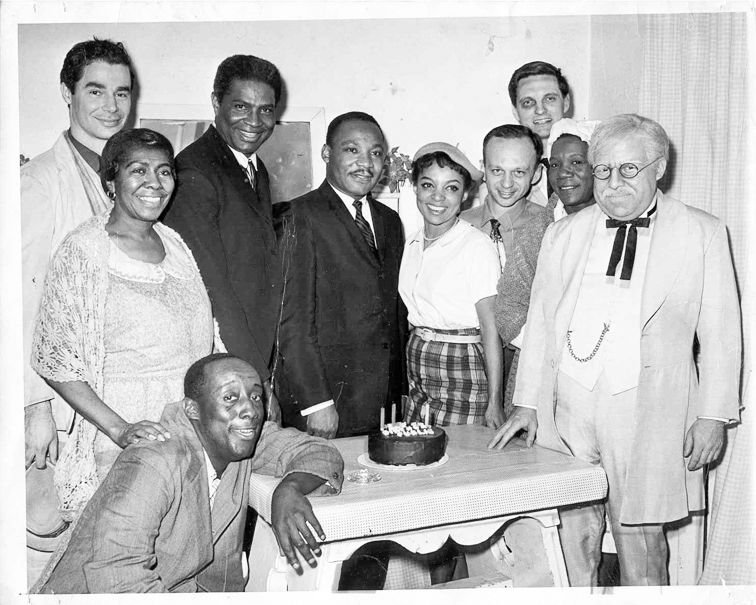
Amid a wintry season, the New York City theater and Broadway scene is still coming in hot.
From the “cotton patch” comedy revival by Ossie Davis, to the longest running “Cell Block Tango” by Fred Ebb and Bob Fosse, to the latest and least expected from the late, great Stephen Sondheim, Broadway and New York City theater had much to offer for all audiences ringing in the New Year.
The Power of Purlie: First Broadway revival of the 1961 play preaches the
praises and pains of our not-so-distant past
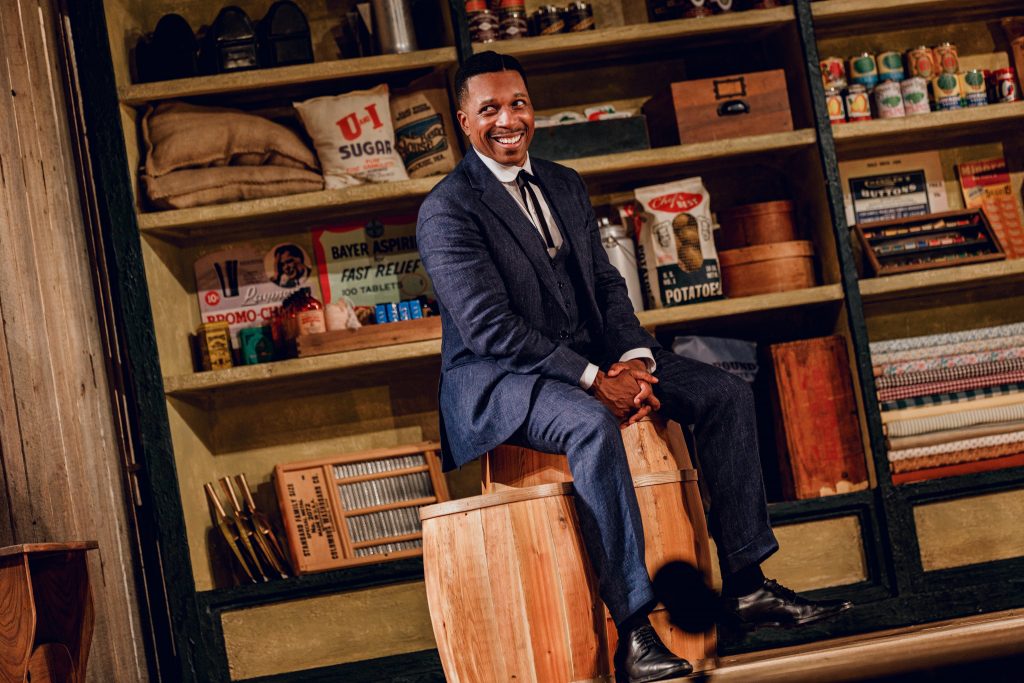
Sixty-two years ago, at the height of the civil rights movement, the late Ossie Davis debuted his original play Purlie Victorious on Broadway. Now, amid yet another social uprising, Tony Award Winner Leslie Odom Jr. has chosen to take his rightful place back on the Great White Way. After a seven-year hiatus, Odom returns to the stage, leading the overdue revival of Davis’ piece that even after all this time, still rings relevant today.
The comedic revival, directed by Tony Award winner Kenny Leon, opens with his voice welcoming the audience in a way only he can. After a nod to the late Ossie Davis and Ruby Dee and a plea for audiences after show TikTok thoughts, the show begins with the company coming onstage and preparing themselves for the jolting one hour and forty-minute jest fest seemingly all in hopes for justice.
The play follows the Black preacher, Purlie Victorious Judson (forcefully and skillfully played by Odom) and his quest to obtain his inheritance from the white confederate man who runs the plantation in Georgia where he resides. His aunt used to work for the Cotichpee family before she and her daughter, Purlie’s cousin Bee passed away. Purlie knows his aunt was owed something for her work before she passed,
but also knows without her or her daughter, he will have difficulties retrieving it. He finds himself in a predicament reminiscent of the struggle Black folx have endured in America for centuries — receiving what’s owed to them. And that is all Purlie wants.
As a sharecropping and cotton-picking family in the 1950s, Purlie knows this won’t be easy and seemingly brews up a scheme to fulfill his mission. He recruits the awkward and simpleminded Lutiebelle Gussie Mae Jenkins, played by Tony Award nominee Kara Young who completely immerses herself in this role. Going so far as to reprogram and reproduce her voice into this very low and raspy register that while adds to the character, can be very jarring on first listen. Purlie asks Lutibelle to play pretend as his late little cousin so he can go along with her to the Cotichipee’s home and receive the $500 he is owed. After falling for Purlie, Lutibelle reluctantly agrees.
Their plan almost prevails until a nerve wracked Lutibelle signs her name on the inheritance papers with her actual name and not with the one she’s pretending to be, Purlie’s cousin Bee. Dysfunction and coordinated chaos erupt onstage when Ol’ Cap’n Cotichipee, the white confederate overseer (played almost too well by Jay O Sanders) calls for Lutibelle, Purlie and the Uncle Tom-ish Gitlow, Purlies brother, (hilariously played by Billy Eugene Jones) who also works for Cotichipee to be arrested.
The trio clumsily escape the arrest, and Purlie later, with the help of Ol’ Cap’n’s own son, Charlie (played by Noah Robbins) comes up with a plan to receive what’s rightfully his once and for all.
Unlike his father, Charlie respects the “law of the land” and pleads with Ol’ Cap’n that integration is the law, but his father refuses, highlighting their generational differences and struggle between tradition and progress. Tensions are high on the other side, too as Purlie and his brother Gitlow bicker on how to navigate being Black in the south.
Gitlow’s assignment by Ol’ Cap’n as delegate over the “coloreds” positions him to get along just to get along and to survive and keep his literal head on straight. He plays the part and sings the Negro songs for his own sake. Purlie on the other hand sees and believes in more. He preaches about freedom for his people.
Purlie does have his faults, “ain’t no lie I done told I didn’t hope would one day come true” he exclaims after hyping up his family as he tells them he’s killed Ol’ Cap’n when he returns home with their $500 and Ol Cap’ns leather whip. His bubble bursts when Idella, Charlie’s caretaker (played by Vanessa Bell Calloway) comes in and tells the truth about his plan.
Purlie does get what he wants in the end as the news of Charlie putting the papers for Purlie’s church in his name takes Ol’ Cap’n out once and for all. The play ends with the entire cast (including Heather Alicia Sims as Missy Judson, Gitlow’s wife) in church with Purlie preaching his own love letter to Black people. Purlie preaches to “accept the full sweetness of your Blackness.” And with those words both the church and the audience said, “Amen.”
The cast of Chicago is truly all that jazz
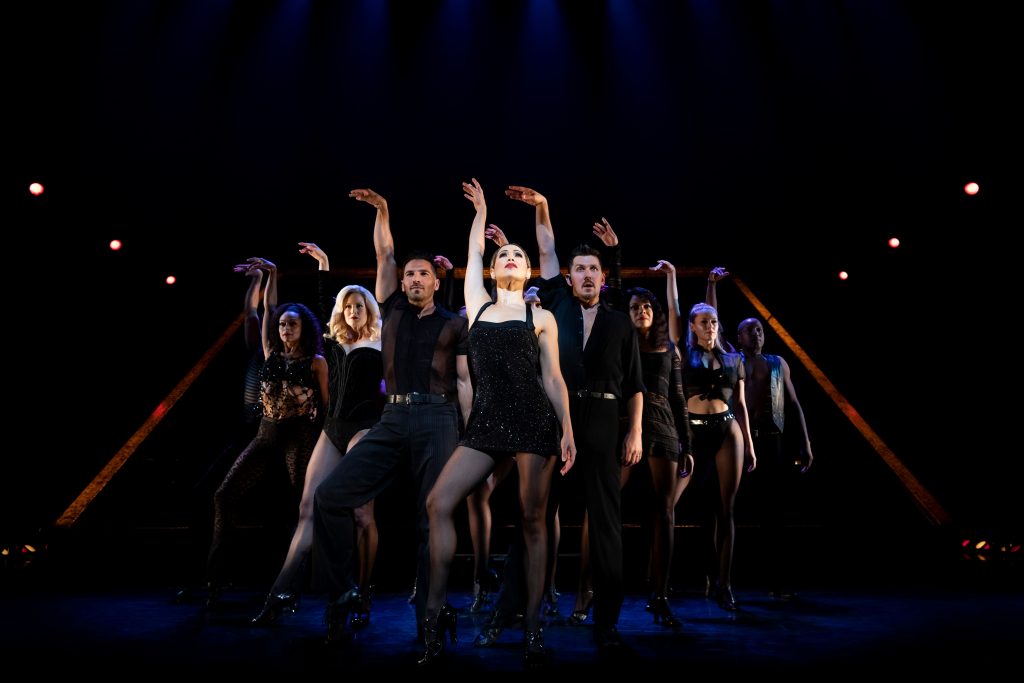
Venture into Chicago! A world where murder, jazz and stardom are all front-page news in this 1920s metropolis. The show’s current run is sure to razzle and dazzle, with a highly experienced cast expertly portraying classic roles. Timeless choreography, stellar performances, and a myriad of laughs help the audience enter the 2024 Broadway season with a – quite literal – bang.
Chicago is set in Cook County Jail where Roxie Hart (Charlotte d’Amboise) dreams of becoming a vaudeville performer, while currently being held for the murder of her lover. This is where Hart meets Velma Kelly (Kimberly Marable), a vaudeville star also awaiting her trial. Both of the women are represented by Billy Flynn, a man who has crafted a defense worthy of applause. Hart and Kelly form an unlikely alliance together to achieve both of their goals through a smashing musical number.
The cast’s interactions with the crowd make the audience feel that they are truly a part of the musical, whether it was acknowledging the audience’s welcomes, to cast members physically moving through and around the rows, switching places with the audience. Some lucky individuals even caught the few roses that were thrown from the stage as Velma Kelly and Roxie Hart expressed their love for the applause after their big duet “Nowadays.”
Securing the spot for the longest-running musical still on Broadway, this cast of Chicago did not disappoint the show’s famed past. As Charlotte d’Amboise finishes her reprised role, she embodies the familiarity and comfort of the character that has been hers for over 20 years. With a soft voice, sharp moves, and witty side comments, d’Amboise keeps the audience engaged and captures the essence of Roxie. Yet, d’Amboise would be without if it weren’t for her equally as talented counterpart, Kimberly Marable.
Marable commands attention from the moment she sings the classic opening number “All That Jazz.” Her striking voice and presence on stage embody the essence of Velma Kelly, a character known for being someone the audience can’t take their eyes off. The duality of Marable’s tone both stands alone and blends evenly with the rest of the cast, like her performance of “Class” with Matron “Mama” Morton (Lili Thomas) –another performer to be reckoned with.
Representing both Roxie Hart and Velma Kelly is none other than high-profile lawyer Billy Flynn (Max von Essen). With a voice that seems to be straight out of a Count Basie chart-topper, von Essen portrays the arrogant but successful Billy Flynn meticulously. Reporter Mary Sunshine (R. Lowe) nearly rounds out the main cast members, with a superb performance showing off their jarring range. Lowe’s endearing act truly brings this character to life.
Not to be forgotten about is Amos Hart (James T. Lane, who previously played Billy Flynn). Lane plays homage to Bert Williams in this role, as he is the first Black actor to portray Amos Hart full-time. Lane commands this role with the talent that is needed to pull off such a magnetic character. Unlike Amos, Lane is unforgettable with both his performance in “Mister Cellophane” and his overall craft.
Finally, the show would be incomplete without the ensemble and orchestra. Like the six merry murderesses of the Cook County Jail, the ensemble is made up of dancers who captivate the audience and execute the Fosse choreography seamlessly, whether it’s purposeful stillness, curved shoulders, hip rolls or coveted jazz hands.
As important as the ensemble, Chicago wouldn’t be complete without the orchestra. The orchestra members are just as much characters as musicians and are consistently interacting with characters, whether they’re elegantly lying on the piano or sliding down the wood paneling on the stage.
Chicago has maintained its long run and withstood the test of time for a reason, as the cast both old and new continue to capture audiences, wanting to experience the rapture of the show.
Ariana Madix has replaced Charlotte d’Amboise as Roxie Hart and will play the role until March 24th.
Here We Are: The second act falls flat
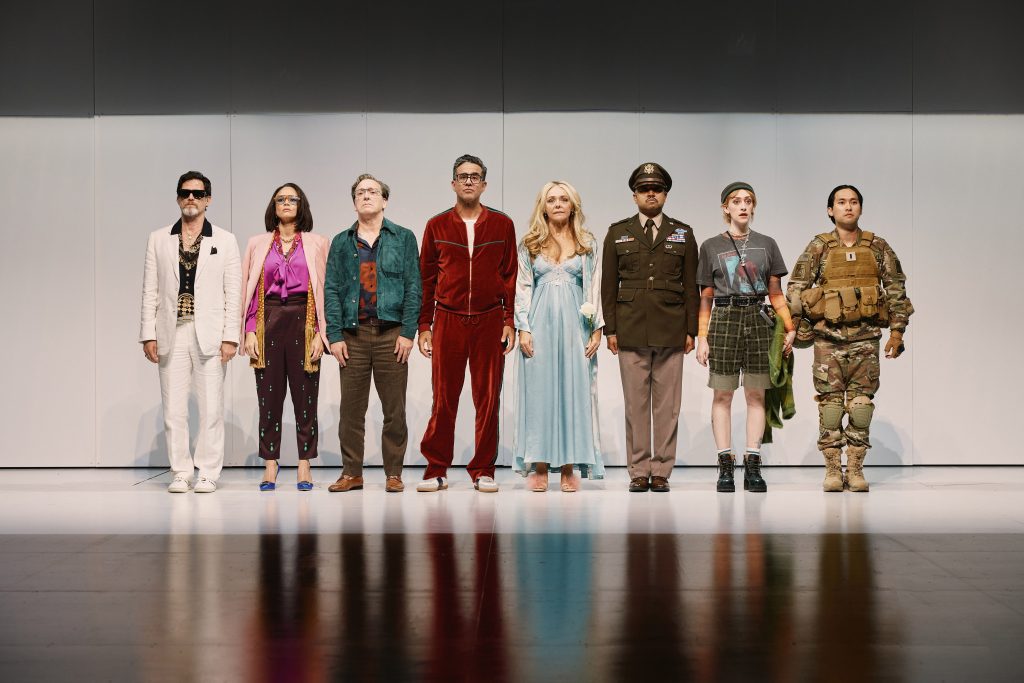
As it embarks on a surreal journey with comedic and thematic potential, Here We Are, eventually fails to arrive at anything narratively satisfying or artistically complete. The cast, vibrant set and costumes and partial score show pieces of experimental success, but without the late Stephen Sondheim present to see his vision through, it seems the production may have been better left to the imagination as his unfinished passion project.
Inspired by Luis Buñuel’s surrealist satires “The Discreet Charm of the Bourgeoisie” and “The Exterminating Angel,” Here We Are thrusts viewers into a nonsensical world where every surreal event and encounter is accepted as normal. Like its socialite cast in pursuit of a restaurant, the fragmented musical wanders aimlessly in search of its purpose, too lost in its incomplete score and illogical world to completely justify its staging.
Watching Here We Are entails taking on a theatrical double feature, where only the characters and illogical framing hold things together throughout both acts. The first, which more closely resembles “Bourgeoisie,” follows the simple, zany premise of a group of aristocrats encountering bizarre characters and situations while they hopelessly search for a brunch spot.
Act Two screeches to an abrupt halt, introducing a virtually separate conflict that strands the cast in a dark, inescapable scenario. The two films’ thematically similar, yet loosely connected satire could pair well together in a viewing marathon. The same cannot be said for this production, which confusingly shifts between two structurally and tonally incompatible narratives. Having been unable to complete the project before his 2021 death, Sondheim’s unresolved score leaves the second act, which was written and completed by different playwrights, feeling even more empty and unrecognizable from the first.
As if aware of its incoherence, the production seems to hide behind marketable stars to keep audiences interested. Bobby Cannavale as Leo, the group’s overconfident and slightly shady leader, and David Hyde Pierce as a bishop searching for a new job, attract significant attention to themselves through their characters’ exaggerated personalities and predicaments. Denis O’Hare, though not the most musically gifted of the show’s players, humorously lurks throughout the first act in multiple roles, eventually settling in the second half as a domestic terrorist disguised as a butler. Despite their best efforts, the cast fails to completely distract from the show’s bigger problems, instead only succeeding in charming their way through the incomplete narrative and tonal mess to the best of their abilities.
To market Here We Are as Stephen Sondheim’s last complete work is like calling Olive Garden authentic Italian food.
While the final product possesses some of his musical DNA and elements reminiscent of his past work, the result is a hodgepodge that disrespects the legacy of the Sondheim name.
Sondheim’s transition from “Merrily We Roll Along” to “Here We Are”
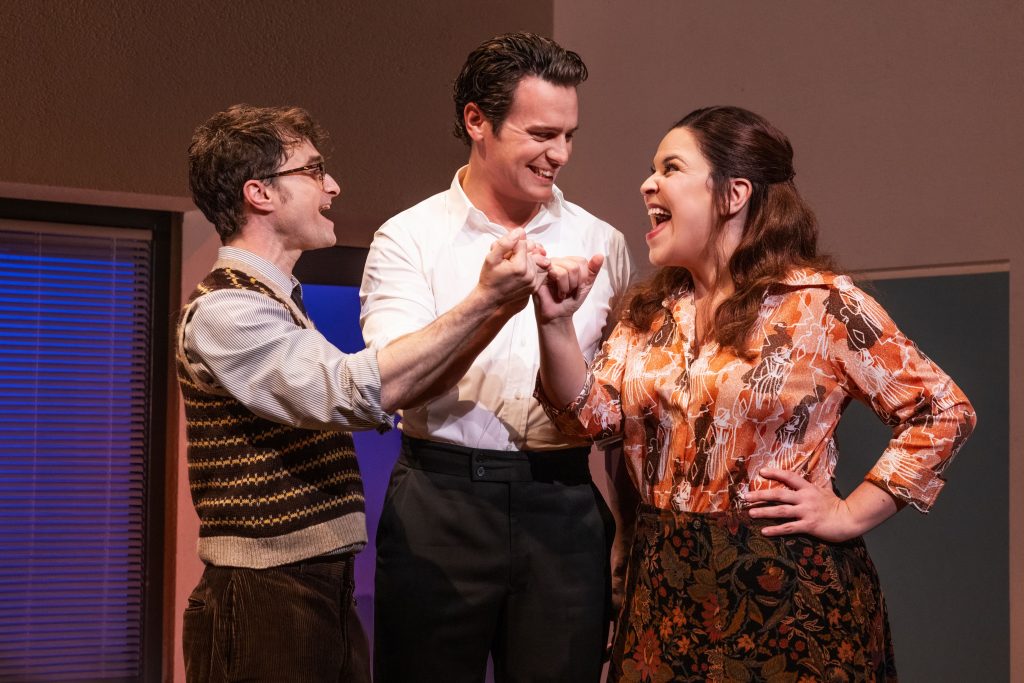
Stephen Sondheim’s legacy as a composer and lyricist precedes him; even if you don’t know the name, you might know the songs. From the haunting melodies of Into The Woods to the lively relationship drama within Company, Sondheim gives every viewer something to sing to and smile about. However, none of his musicals are more notorious than the ill-famed flop, Merrily We Roll Along.
Merrily We Roll Along, based on the 1934 play of the same name, begins in the present and moves backward. It traces the lives of wealthy, jaded composer Franklin Shepard (Jonathon Groff) and his two estranged friends, Charlie Kringas (Daniel Radcliffe), and Mary Flynn (Lindsay Mendez), through each milestone of their personal and professional lives. Because the songs are deeply intertwined with the characters’ journeys, they often highlight the contrast between the idealism of their youth and the realities they face as adults.
The musical includes themes like a wealthy main character, scenes in reverse chronological order, and a particularly Sondheim-y sense of melody. These themes make Merrily We Roll Along truly one of a kind. Or do they?
Here We Are, Sondheim’s final work, intertwines the lives of its characters in a non-linear narrative, exploring themes of wealth, time, and identity. The musical showcases a core friend group including Leo Brink (Bobby Cannavale), his wife Marianne (Rachell Bay Jones), her seemingly progressive sister Fritz (Micaela Diamond), and others, all characters who are initially seen as part of the elite. As the plot unfolds, their true stories and the illusory nature of their success are revealed through Sondheim’s comical droll.
While watching Here We Are, Sondheim’s final musical, one might notice some familiar themes — blind wealth, disintegrating time and a plethora of whimsical melodies. From affluence that blinds to the perplexing concept of time, here are the three most overtly Sondheim traits the musicals share.
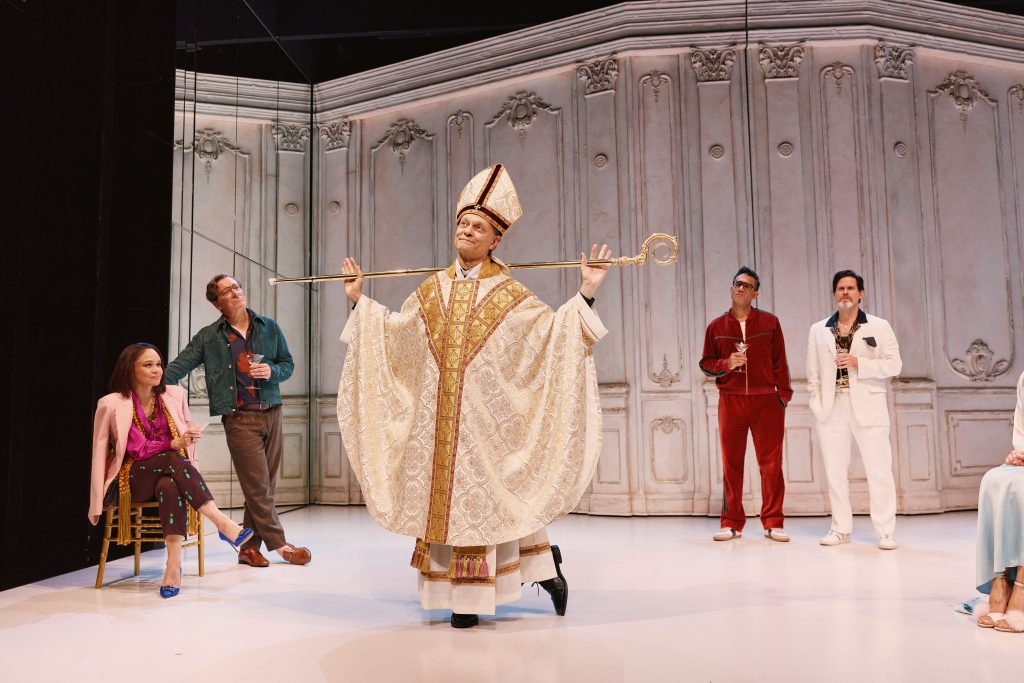
The audience is first introduced to the aristocracy, whether it’s the Hollywood elite of the 1970s or the Italian drug cartel. In Merrily, viewers see characters at their most materialistically successful, attending a party at Franklin Shepard’s extravagant Hollywood home. Conversely, in Here We Are, every character seems to belong to the top 5%, be they part of the resistance or something more lucrative. For instance, Leo (cartel) casually passes Fritz (resistance) 50 million dollars as hush money following a casual blackmail.
As each show unfolds, the characters’ wealth dissipates, whether due to reverse aging in Merrily or selling off assets for pastries in Here We Are. Both musicals feature a rich elite who are in denial, in sin, and fundamentally unhappy, highlighting a contrast between the characters’ aspirations and the realities of their wealth.
Non-Binding Time
Merrily is notorious for its strict reverse chronology. It starts in the late ’70s and moves backward to the late ’50s when the trio is struggling in school and sharing an apartment complex. Here We Are offers a more flexible time frame that still deviates from traditional chronology.
Although it begins with characters waking up for brunch, the concept of time soon unravels. The day runs into night, and night runs into probably another night, and soon the characters and the audience lose all sense of whether time has started, stopped, or continued. While Merrily relies on recurring motifs and melodies, Here We Are employs literal repetition and plays with time, having characters deliberately reread their lines and physically move backward through scenes. Merrily and Here We Are entangle timelines, whether they work in reverse or loop in confusion.
The Sondheim(ness) of it all
The most apparent similarity between the two musicals is also the reason for Sondheim’s infamy: the music and melodies. Both scores are imbued with a lighthearted, whimsical quality that captures the narrative’s spirit. Moreover, actors play pianists on stage in both shows, adding a layer of mischievous interaction. In Merrily, Frank tests new compositions alongside new lifestyle choices at the piano. In Here We Are, the bishop sits at a piano that refuses to play, a touching homage to Sondheim’s passing.
The compositions in both musicals vocally challenge performers with quick octave jumps to sustained notes that hang in the air for laughable amounts of time, all contributing to the quintessential Sondheim soundscape.
Although written nearly forty years apart, the essence of Sondheim is palpable in both musicals, showing that while a composer’s style may evolve, certain elements remain distinctively characteristic.
